If only excited by rare birds, you’ll rarely be excited.
Get excited about birds you know you’ll see. The common and accessible—not rarities.
Black-capped Chickadee (Poecile atricapillus) has neuroplasticity, geographic song variations, and plenty more.
There are dozens of Song Sparrow (Melospiza melodia) subspecies to get excited about.
Not to mention over a dozen subspecies of Dark-eyed Junco (Junco hyemalis), broken down into six groups.

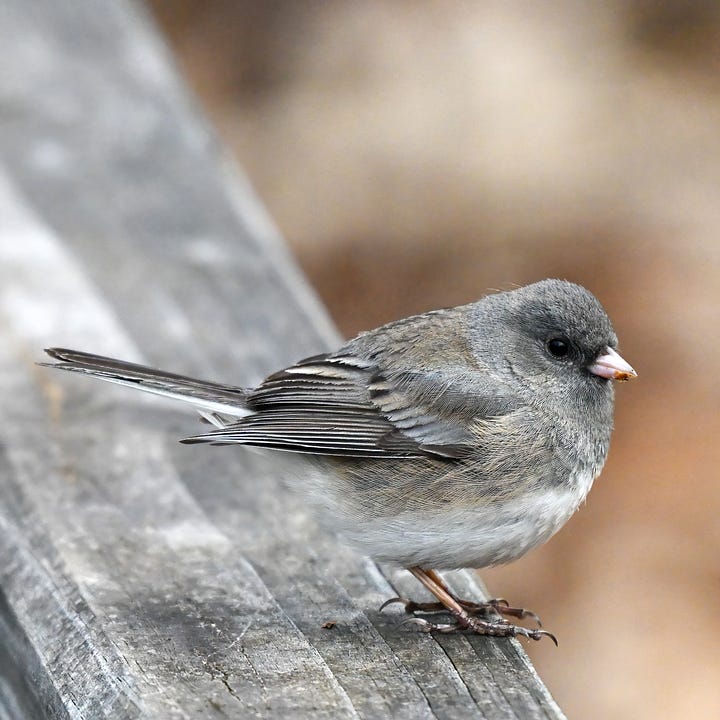
Oregon, Slate-colored, Gray-headed, Pink-sided, White-winged, Red-backed.
Blue Jay (Cyanocitta cristata), the “common, large songbird” (emphasis mine) is in fact common, but uncommonly good at hawk call mimicry.
I’ve used the Black-capped Chickadee as my representative species for overlooked birds. Perhaps it should’ve been the American Robin (Turdus migratorius).
Chickadees can be evasive. They’re loved by birders—and there’s more than just one: Black-capped, Carolina, Mountain, etc.
American Robins are larger, eight to 11 inches versus a chickadee’s five. If there’s an easy bird to bird for, maybe it’s the Robin. I’ve never had to try too hard to get a look at one.
There are seven subspecies “based on differences in body size and plumage color,” American Bird Conservancy says. The differences are “so slight and variable that no subspecies are reliably identifiable outside of their normal range,” Sibley adds.
We have Turdus migratorius migratorius, the basic Robin, and Turdus migratorius nigrideus, the Black-backed. There’s also Turdus migratorius phillipsi in eastern Mexico, and Turdus migratorius confinis, the San Lucas Robin of Baja California. Turdus migratorius achrusterus breeds “from southern Oklahoma east to Maryland and western Virginia and south to northern Florida and the Gulf Coast states.” Turdus migratorius caurinus, the Northwestern Robin, is found in “southeastern Alaska and western Canada to northwestern Oregon.” The Western Robin, Turdus migratorius propinquus, is in the American southwest, “eastern British Columbia…and southwestern Mexico.”
If you need an easy bird to get excited about, consider the Robin.
By “easy” I mean they’re not hard to find and ID, but also that they’re “easy to get excited about” if you learn a little about them.
The American Robin energy conveyed in the image below, from wildlife photographer and content creator Jack Turner (jack_wildlife), is one we should all embrace.
There’s no shortage of Robin facts1 but let’s just appreciate that Robins, considered pedestrian by many, are beautiful.
The way their orange bellies complement the berries they are so often among! If the bird is perched on a sumac,2 that belly complements the sumac!
The broken white eye ring, the way it contains an eye that so often reflects the light as the bird gives its morning serenade—our “quintessential early bird.”
For quite some time I’ve been on my soapbox about the wonders of common, accessible birds: chickadees, ducks, gulls, so on.
A gull is beautiful? Yes, I’ll die on that hill.
Somehow I never got on the soapbox for the American Robin. I want to fix that. Robins are amazing birds in plain sight. Probably the first you hear in the morning, and a good starting point to learn birdsong.
writes in an essay for that the American Robin’s song and those similar provide a place to start learning. The Robin “is so easy to find and to listen to that you can learn its song quickly.” This allows one to “compare unfamiliar songs with the robin’s in a way that helps you place them and remember.” Scarlet Tanager, Rose-breasted Grosbeak, and Red-eyed Vireo—the classic robin-like songs you can learn on Larkwire3 and that I wrote about in Birding By Ear.Next time you see an American Robin, pause. If it sings, listen. If it’s eating berries or a worm, admire it. You’ll come away with the clear realization: American Robins are beautiful birds, right there for any of us to see.
e.g. Audubon’s “10 Fun Facts About the American Robin” and more.
As in the second image.
Worth your time and money if you want to learn birdsong.


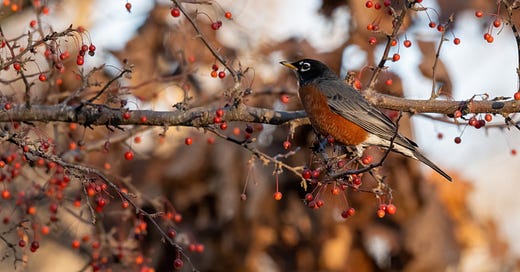


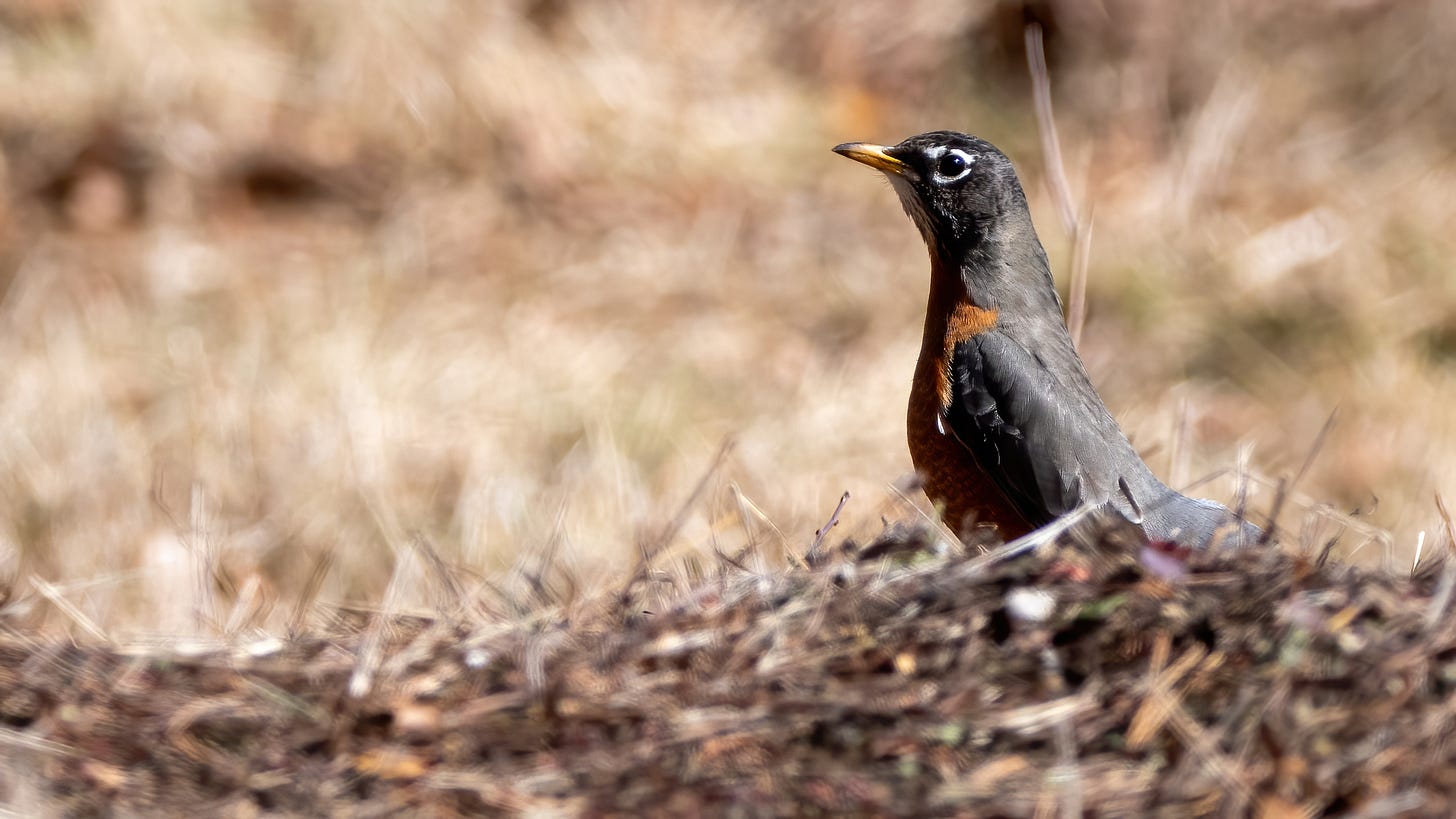



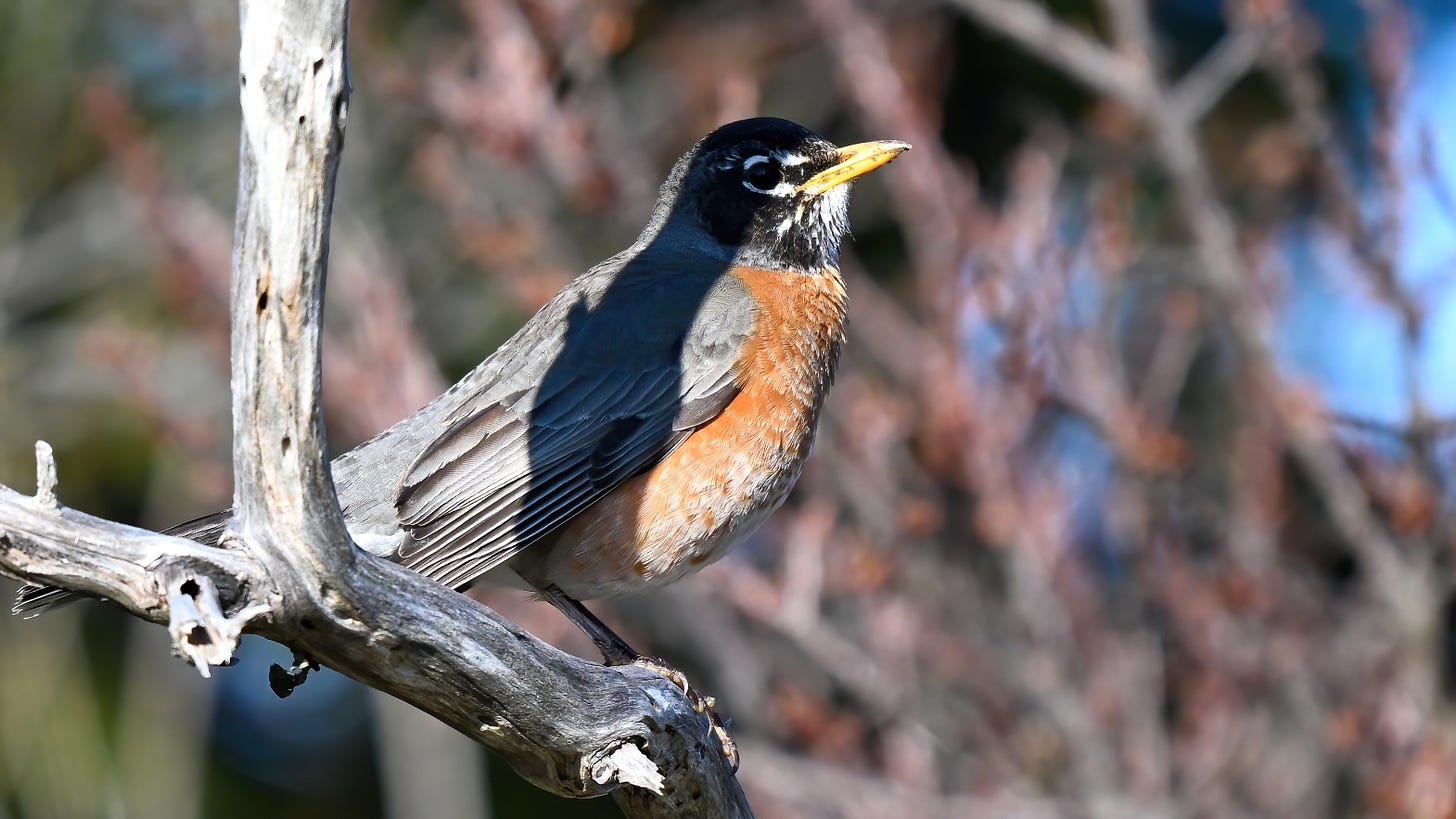
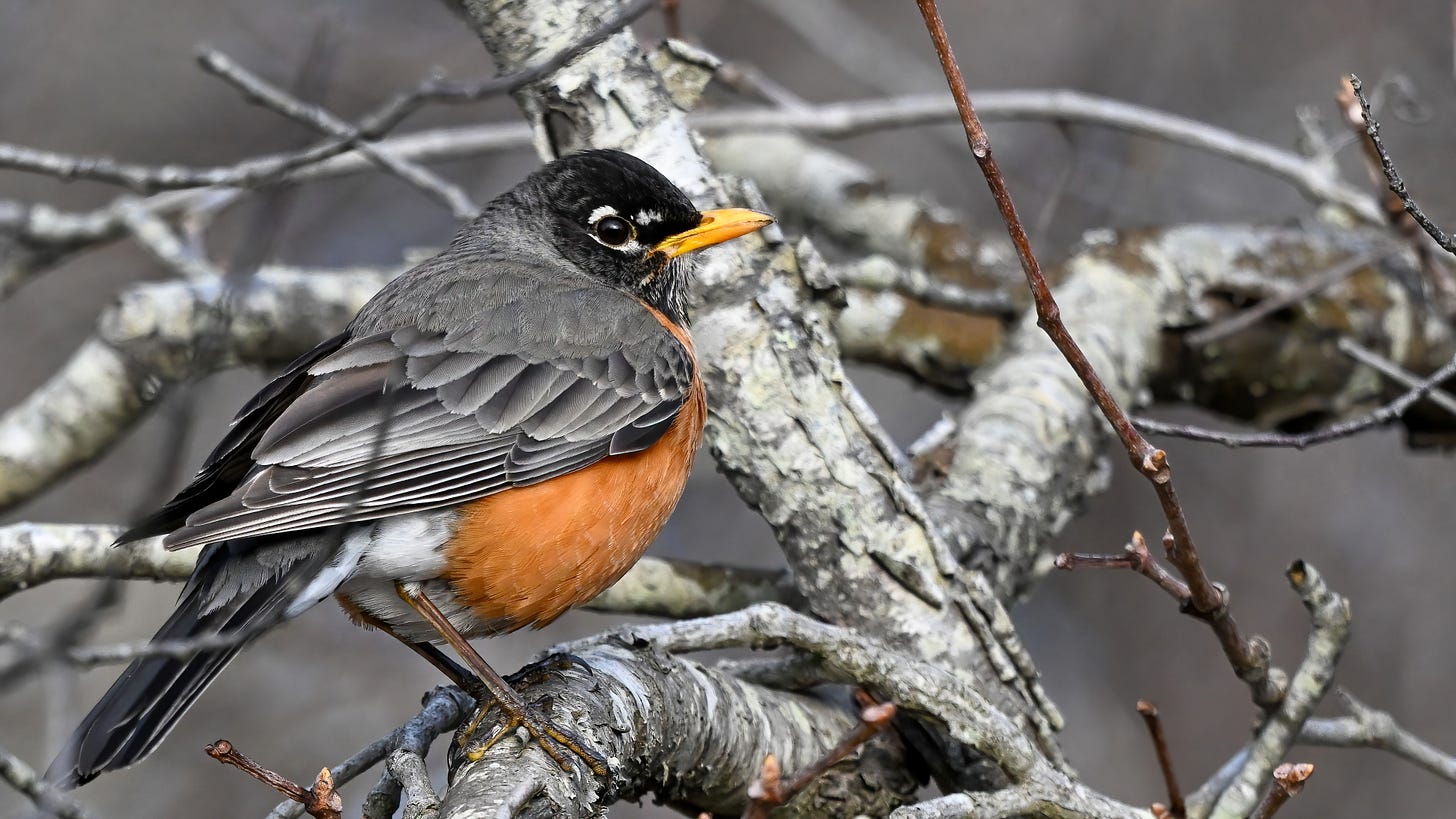

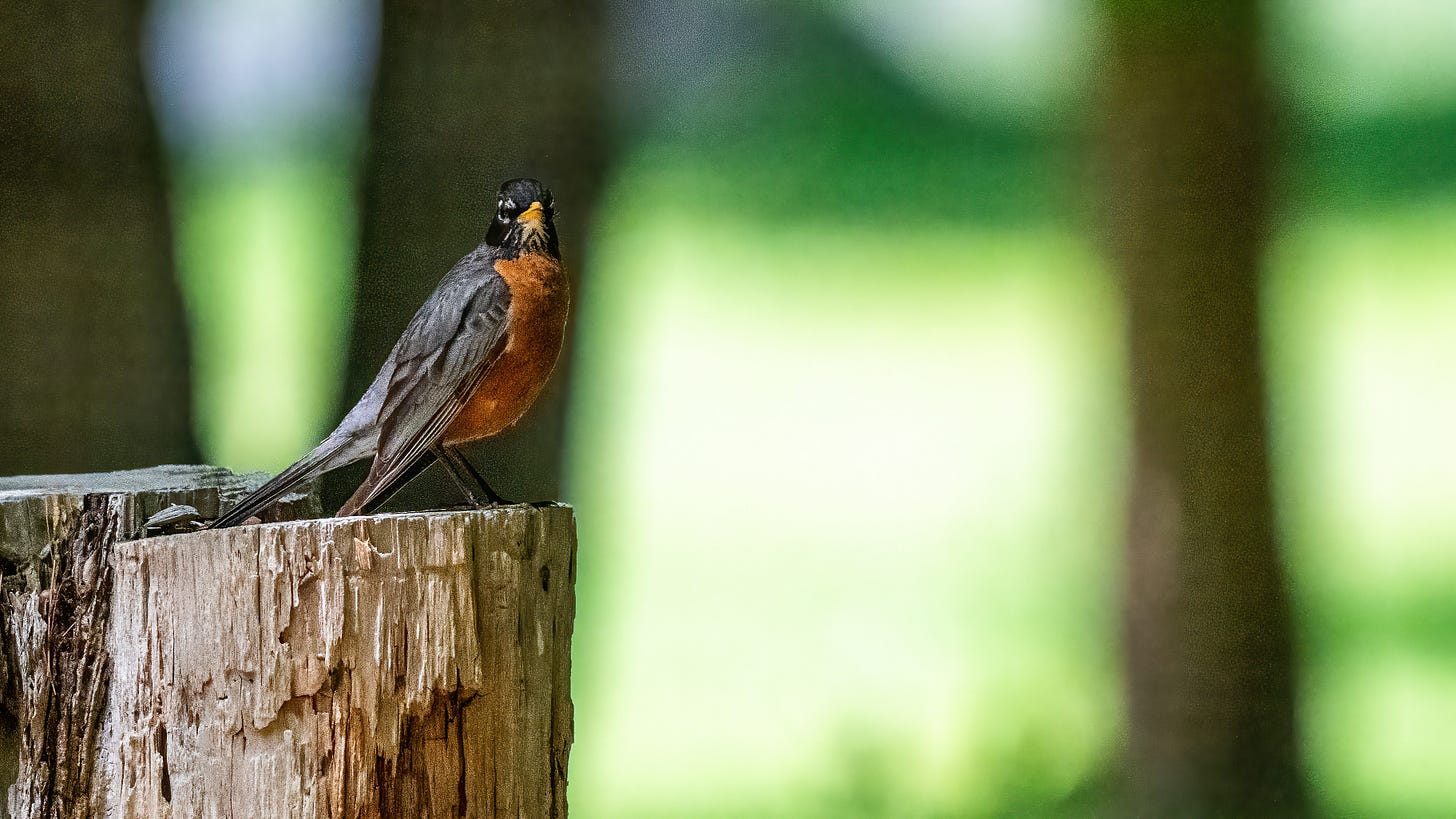
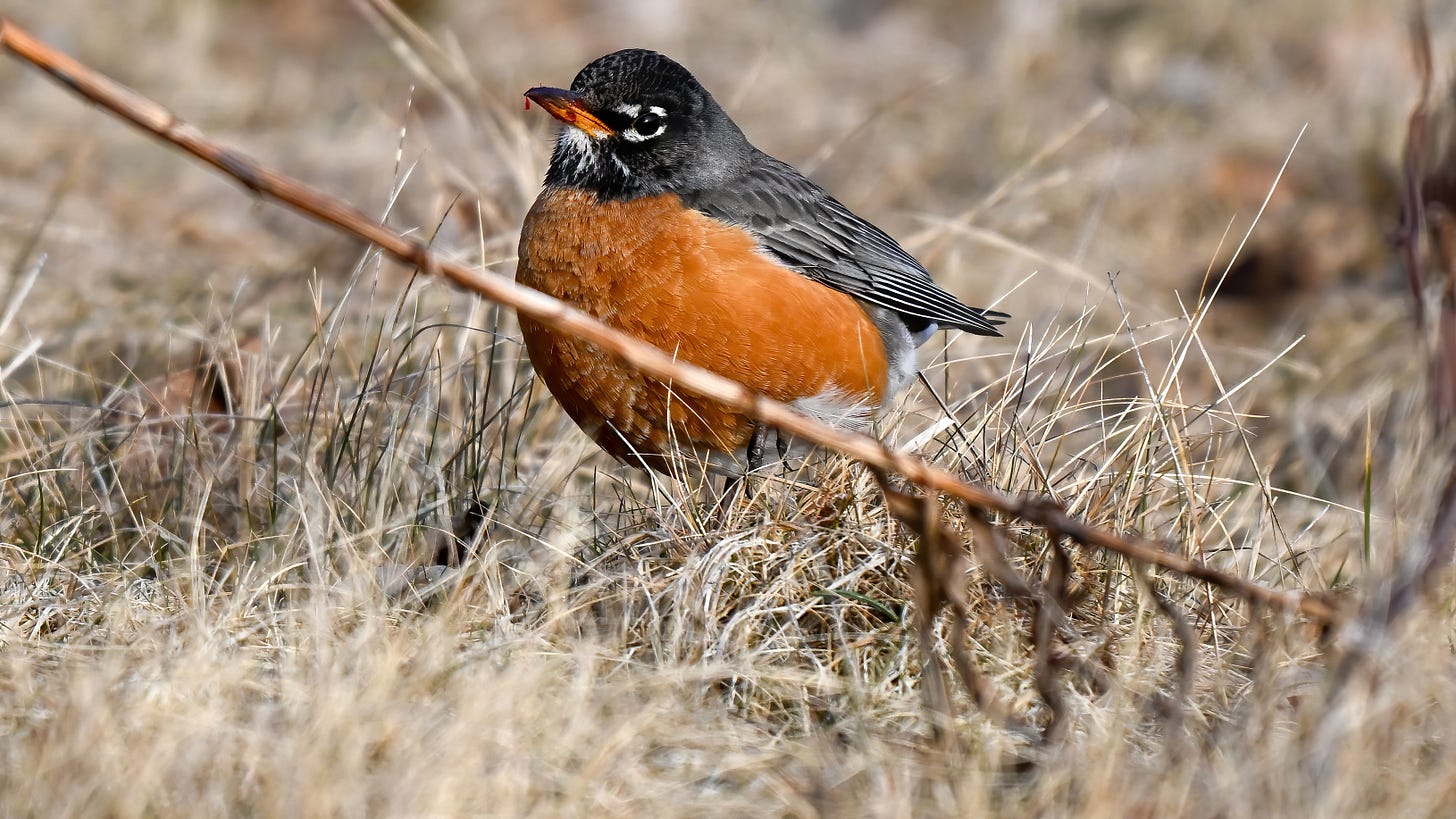
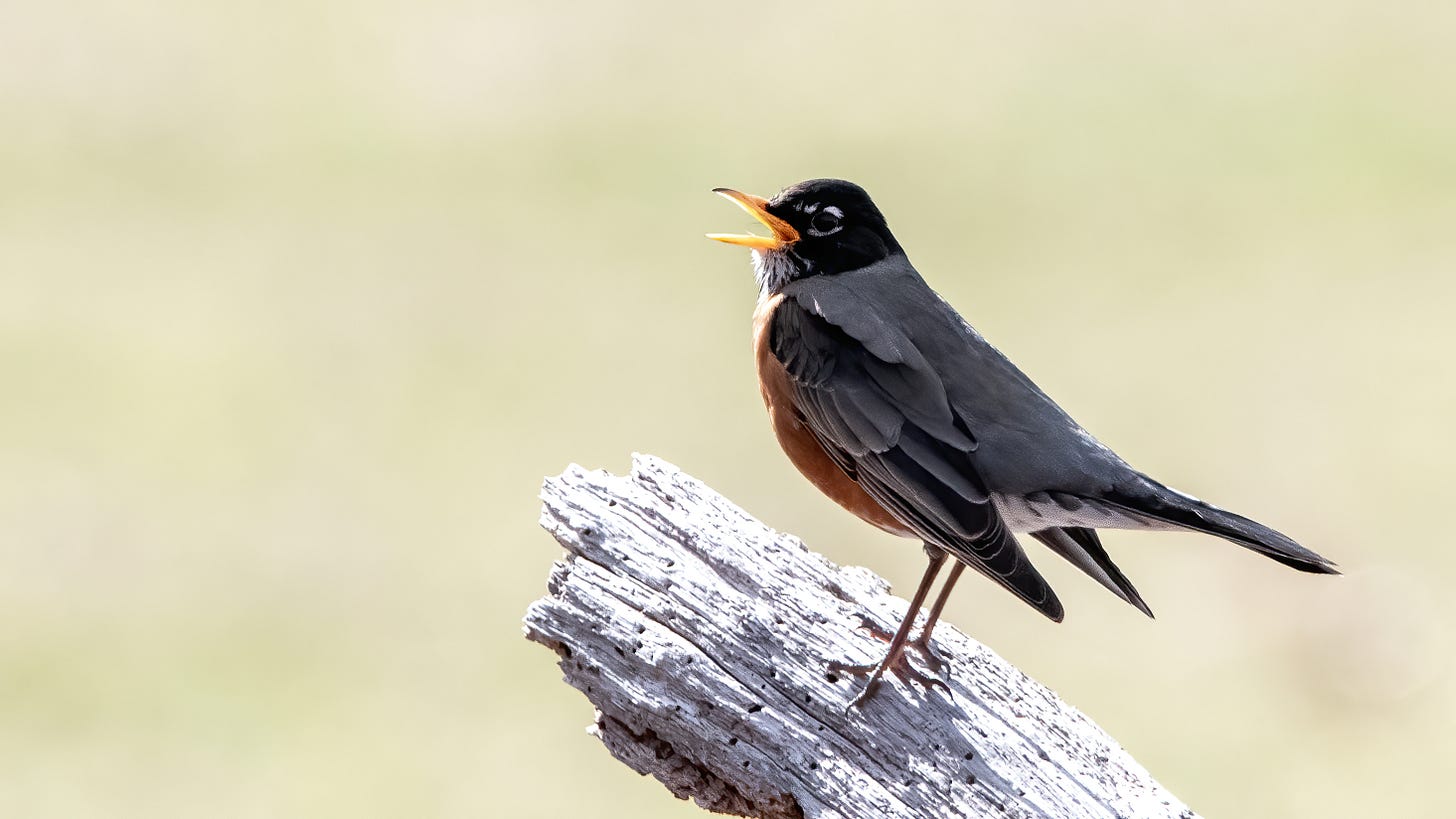


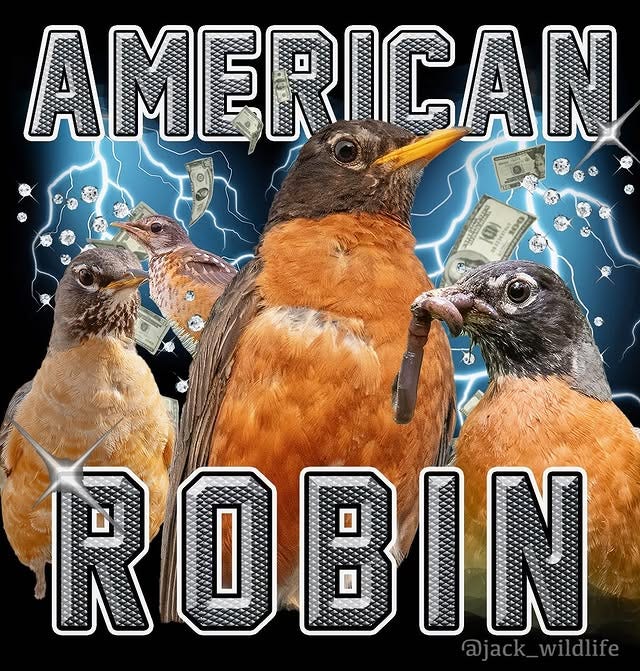



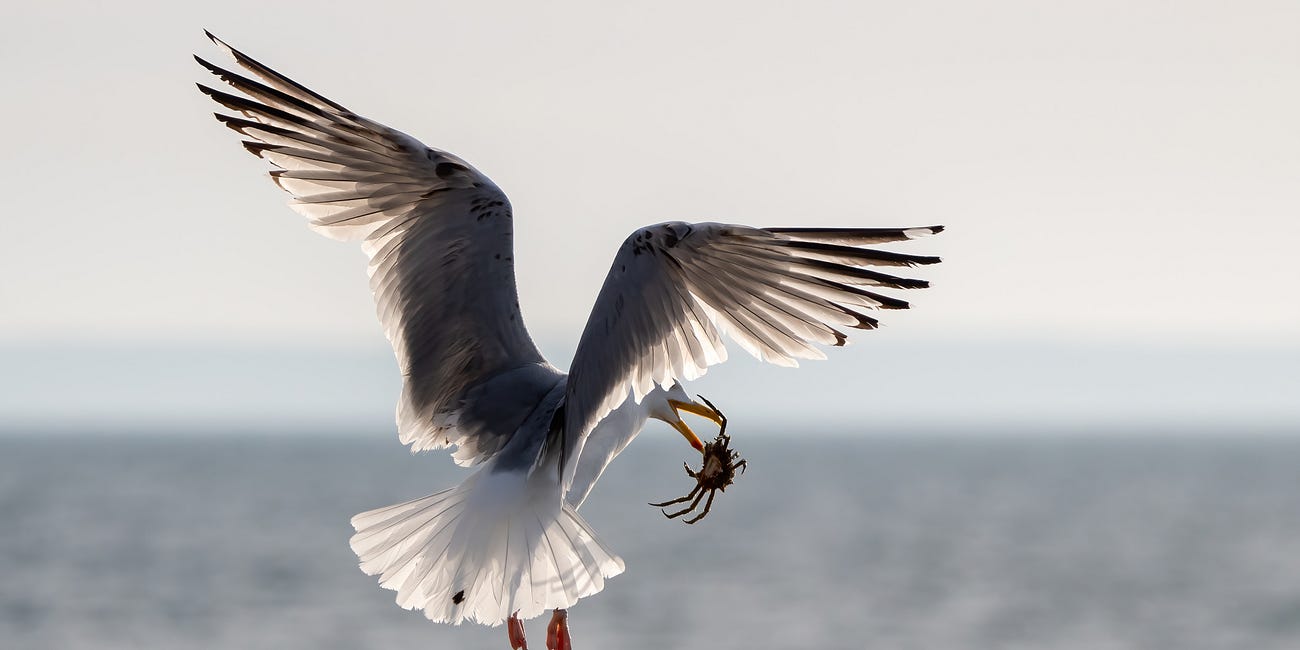

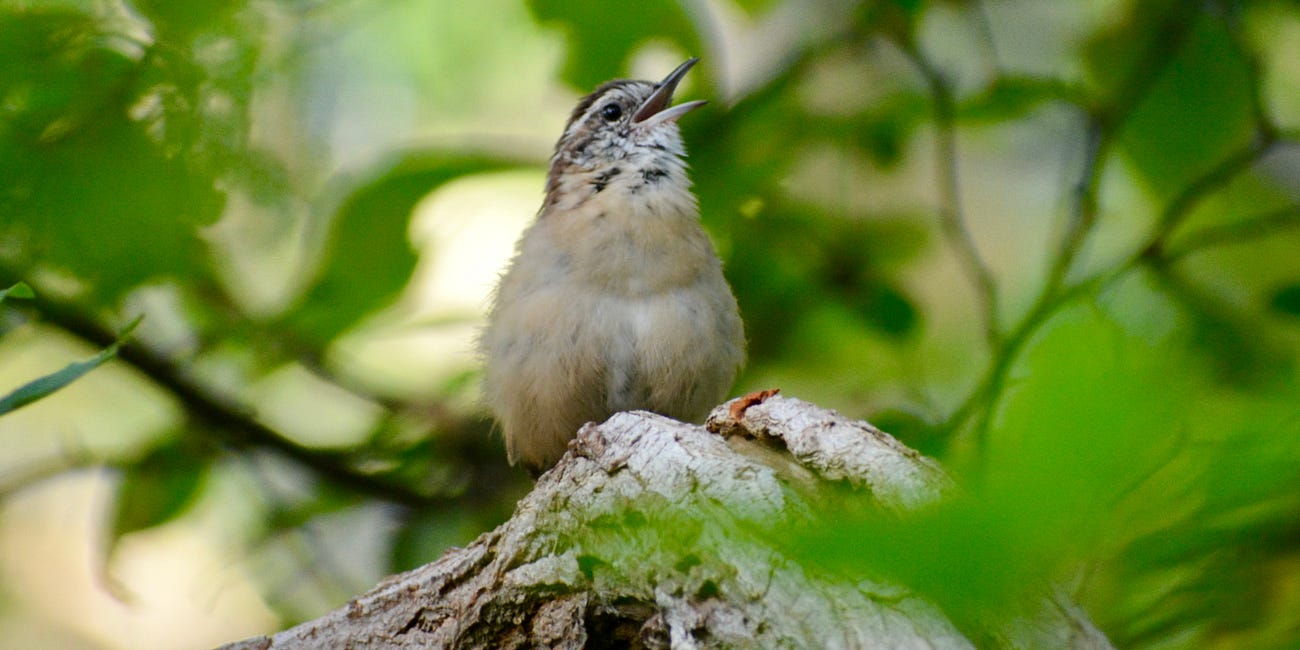


I had fallen into the trap of “Oh it’s just a Robin”. Then a new birding friend asked me if I could tell the difference between a male and female robin. Picture me eating humble pie. I can still remember the embarrassment of that moment, which was 40+ years ago. From that day forward, I truly enjoy looking at every robin making that distinction. Thanks for this reminder to look at, think about, and appreciate every bird. 🪶
This is a really informative post to scroll through, James. Excellent field guide on many levels, but I'm especially impressed with the Robins. I didn't realize how many subspecies there are. They are always a welcome sight in Spring.